Lome, Togo
February 10th, 2025
What on earth was right outside our balcony this morning?
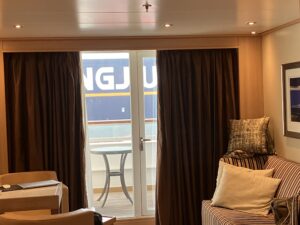
I opened the curtains to get a better look.

It was a large Chinese car carrier. The good news was that there were coaches waiting to whisk us all away on our shore excursions. Not a coaster bus in sight thank goodness. I hope our coach will have clean windows today.
We booked the ship’s tour to Togoville. This was clearly a popular choice and there were 2 groups of passengers on the tour. The first group were ushered to their awaiting large, air-conditioned coach, but our group was directed to a small, cramped coaster bus. Oh no, not again!
Luckily this coaster bus did have air conditioning, and clean windows, so things were not too bad.
We settled in to our seats, but there was a delay in getting going. We could see that the ship’s tour staff were having some sort of discussion with the authorities. Finally we had the go ahead to set off. Our guide informed us that we would be accompanied by members of the police force. It was difficult to ascertain why this was necessary. He stated that it was for our protection, but denied that we were at risk from any form of harm whilst in Togo. So he could not explain why we needed protection.
We were back in the land of the tuk tuk.
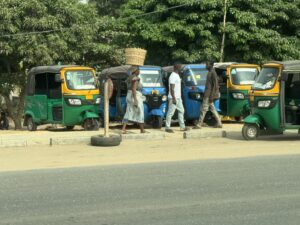
We drove through Lome to the south shore of Lake Togo.
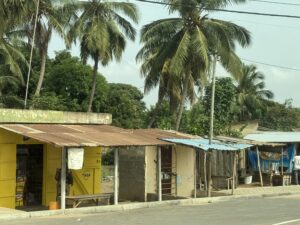
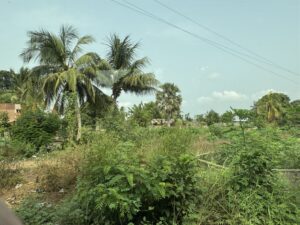
Our first stop was at the Hotel Le Lac.
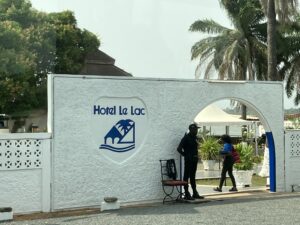
The hotel was right on the beach
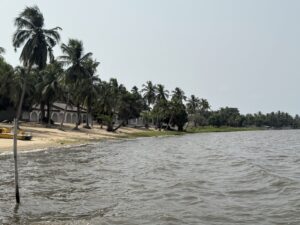
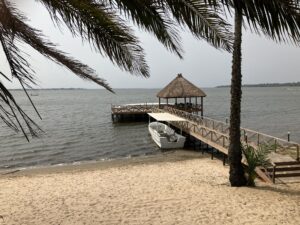
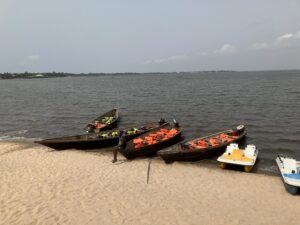
and from there we boarded long wooden ships called pirogues. We had been warned that we would get our feet wet getting into the boats, but we were able to avoid this and enter the boat directly from the sandy beach. From the hotel we were transported across Lake Togo (which is really a large lagoon) to the town of Togoville.
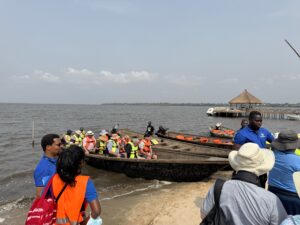
It was a short trip across the lake
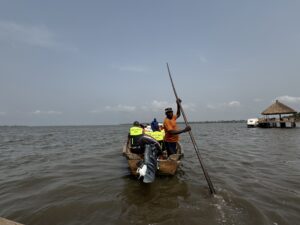
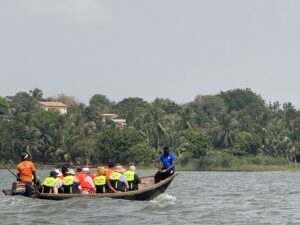
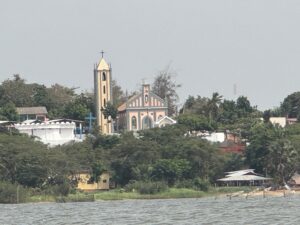
Passing by the men fishing and the fish farms
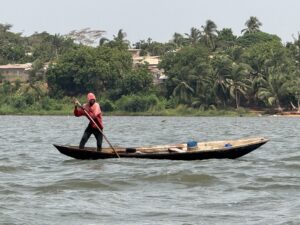
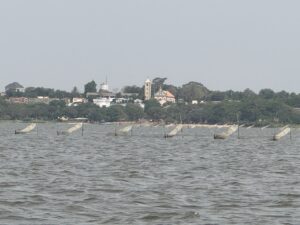
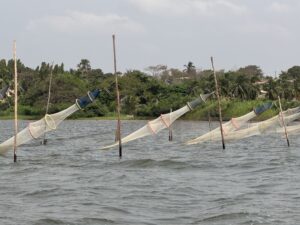
And a water taxi, packed with passengers and motor bikes.
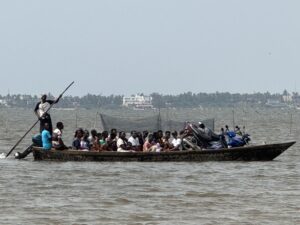
Togoville was originally simply called Togo. When German explorer, Gustav Nachtigal, came to the area in 1884, he signed a treaty with the local king, Mlapa III, establishing a German protectorate and giving colonial power and privilege to the Germans. He named the town ‘Togostadt” and declared it the capital of Togoland, now Togo. This was a friendly treaty and all seemed to go well.
During the First World War, Togoland was invaded by British and French forces. In 1922, Britain received the League of Nations mandate to govern the western part of Togo and France was given the eastern part, which included Togostadt. They immediately renamed it Togoville.
When we arrived in Togoville I was taken by surprise when a man suddenly scooped me up out of the boat and carried me ashore. Yay! I didn’t get my feet wet, but a word of warning would have been nice. Brian was not so lucky, he had to wade ashore.
With everyone safely off the pirogue we started on our tour of Togoville escorted by our guide and rifle bearing police officer.
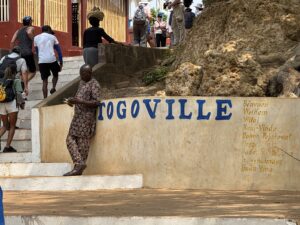
The town looks much the way it has probably done for centuries,
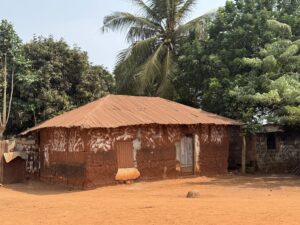
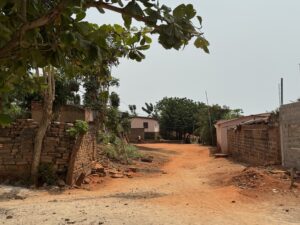
And it was fun to see goats and chickens running around.
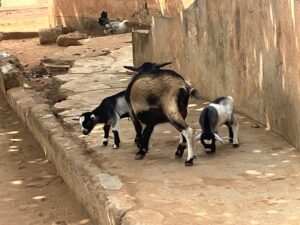
And the street art.
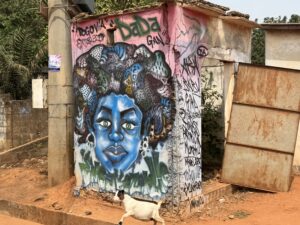
Many of the residents follow the vodun religion. Vodun is an animist religion in which practitioners believe that everything has a spirit. In fact, the word vodun means “spirit” in the Fon language of Dahomey (present day, Benin). The vodun are deities assigned to particular areas, or can also be ancestral spirits.
The primary goal of vodun is “sevi iwa” (“to serve the spirits”). The followers venerate their ancestors and revere nature. They are concerned by the power of evil spirits and through the power of good spirits are hoping to receive protection, health, power and favor from the vodun..
We stopped at the house of a vodum practitioner.
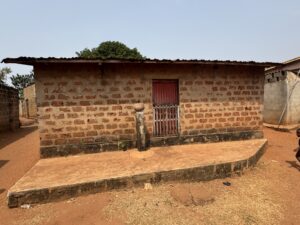
A short distance from this house is a sacred tree which is believed to be the home of the spirits. The yellow on the white cloth wrapped around the tree is palm oil, and the red is blood from a recent sacrificial ritual. Usually small animals such as chickens are sacrificed, and the meat from the chicken is then consumed.
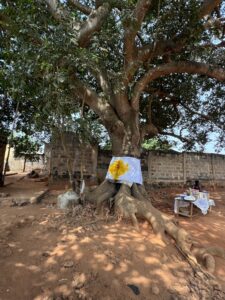
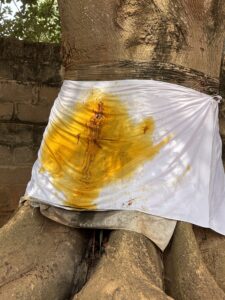
We stopped by a male deity where there had also been a recent sacrifice
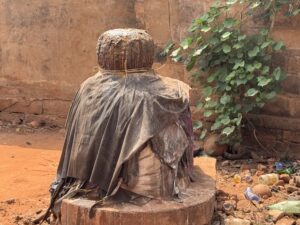
Only this time the chicken was not eaten.
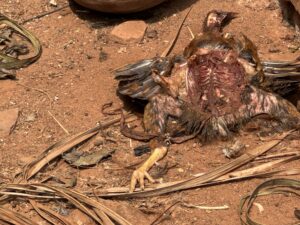
The female deity is in a little house,
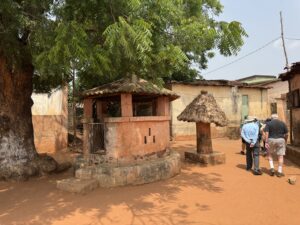
and I thought she looked quite creepy.
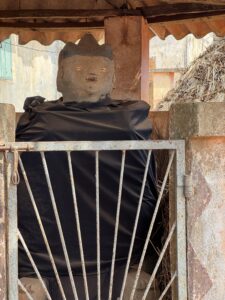
Twins are thought to be sacred, and so if you have twins a sacrifice of thanksgiving must be made at the twin trees.
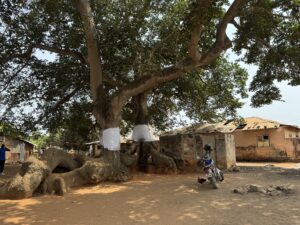
One tree is male, the other female. The trees’ branches are intertwined. interestingly enough weaver birds only build their nests on branches of the female tree.
Our guide told us to be on the lookout for flags on the houses. They weren’t hard to spot. Apparently, these flags are flown over homes to signal that there is a presence of vodun in the house. As such, certain protocols must take place prior to entering.
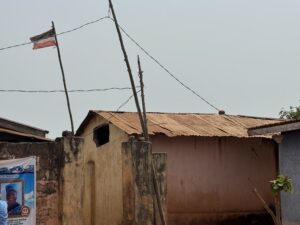
We visited the market, which has a deity that you visit before you start shopping to ensure that the shopping goes well. This one was also quite creepy.
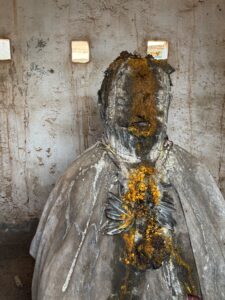
It is a barter market, so no money changes hands. The role of the market deity is to make sure everything is fair.
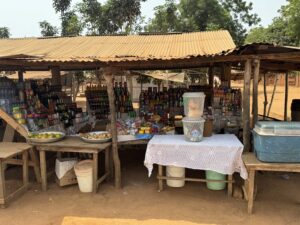
In the grounds of the craft shop there are 2 statues depicting a young boy and an older gentleman in conversation. Our guide said that these statues are called “Conflict of Generations,” and symbolize the inherent disagreements and misunderstandings that one generation has with another. Now there’s a concept that I think everyone can relate to, no matter their culture or religion.
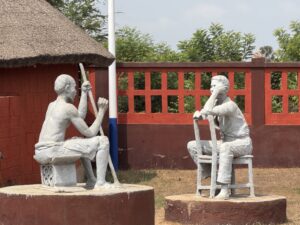
There is another interpretation that the statues represent the situation between locals and their French colonial masters. The local chief is elderly and is depicted as proud, sitting erect, wearing traditional clothes and carrying a ceremonial staff. He is directly facing his younger French ruler. The Frenchman is shown wearing casual clothes and sitting astride his chair leaning on the back of it to look at the chief. The symbolization is that the colonial powers showed no respect to those whose country it was. The French had a more uneasy relationship with local people, mainly because the situation was forced upon them, whereas they had freely negotiated with the Germans.
Either way, they are powerful statues.
When the Germans came to Togo the vast majority of the populace followed the vodon religion, but this didn’t stop them building a large Presbyterian church in Togoville in 1910. When the French took over they converted it to a Catholic church and renamed it the Notre Dame Cathedral. The original bright colours and stunning stained glass put in by the Germans still remain, though.
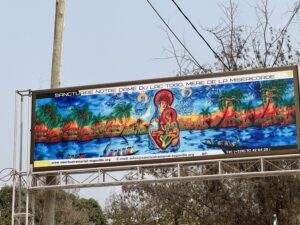
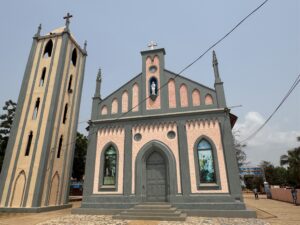
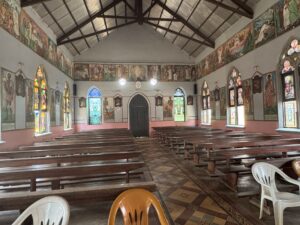
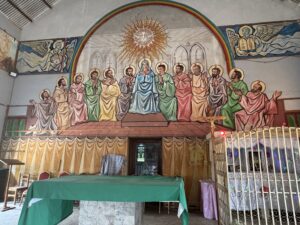
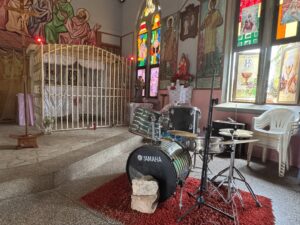
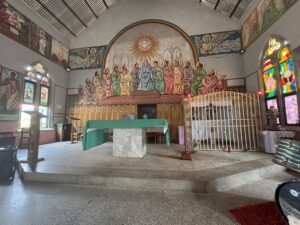
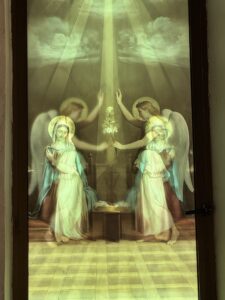
In the 1970s, the Virgin Mary is said to have appeared to a girl on the lake. This prompted the building of a shrine
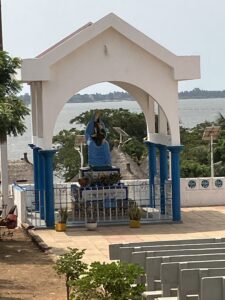
Due to the miracle, in1985, Pope John Paul II visited the cathedral and held a service here. which over 2000 people attended. It is thought to be the only time the Pope prayed with animists and paid homage to a sacred snake which was part of the vodun spirits.
The canoe in which the pope crossed Lake Togo is now considered to be sacred and sits outside the church. Because pilgrims kept on taking pieces of the wooden canoe it is now encased in concrete.
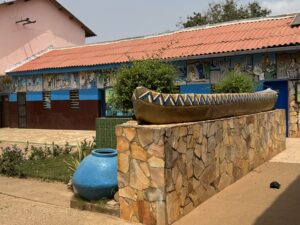
A visit to Togoville would not be complete without an audience with King Mlapa.

The king discussed the history of Togoville, and answered our questions about the town and his duties as king. He was very engaging and we really enjoyed meeting with him.
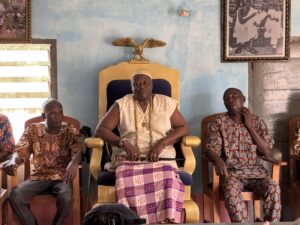
Then it was time to head back across the lake for lunch at the hotel. Guarded as always by our rifle bearing police officer.
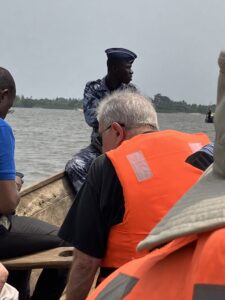
Lunch was good.
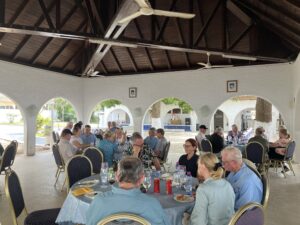
They didn’t have any regular Coke, only Coke Zero. After much discussion we were able to get a local version of Coke, which actually tasted OK.
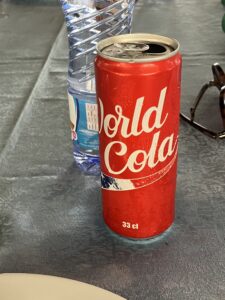
After lunch we piled back into the coaster bus and headed to Agbodrafo where we visited the slave house. This is a small house near the sea that was built in the 1830s, after slavery was made illegal, so that slave traders could continue to kidnap and export slaves despite the ban.
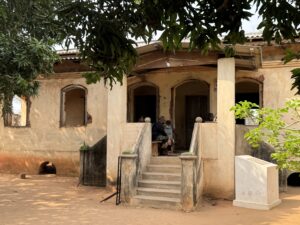
Weirdly, it looked like a regular house, except that under the floor boards was a space about 6 feet high where slaves were kept in secret while waiting for the boat to come for transport. All very sad.
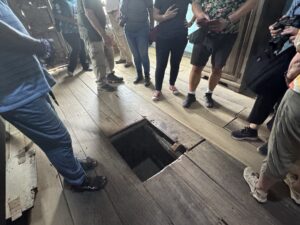
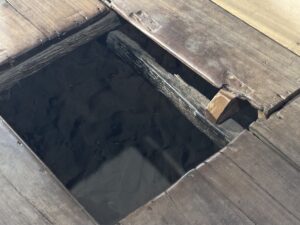
Then it was time to head back to Lome through the smog from the refineries and cement factory.
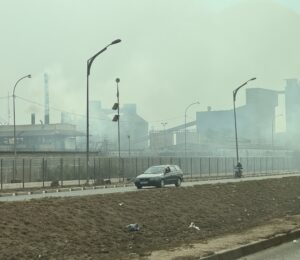
When we returned to the Sojourn, the Chinese ship had left, and we had a better view of the port.
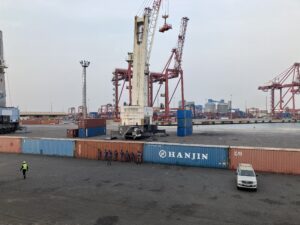
We had a great sail away party on deck
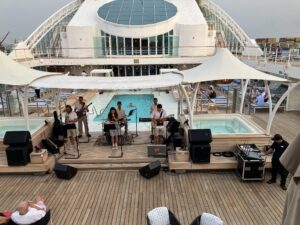
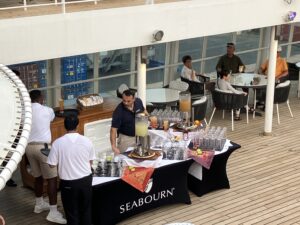
and then we sailed out again into the Gulf of Guinea.
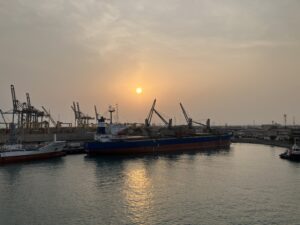
We had a great meal in the restaurant, and on returning to our suite we were greeted by yet another towel creature. Oh dear, where on earth are we going to keep it?
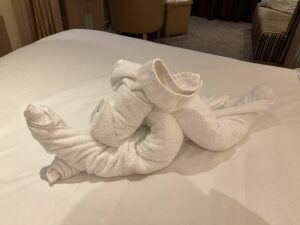

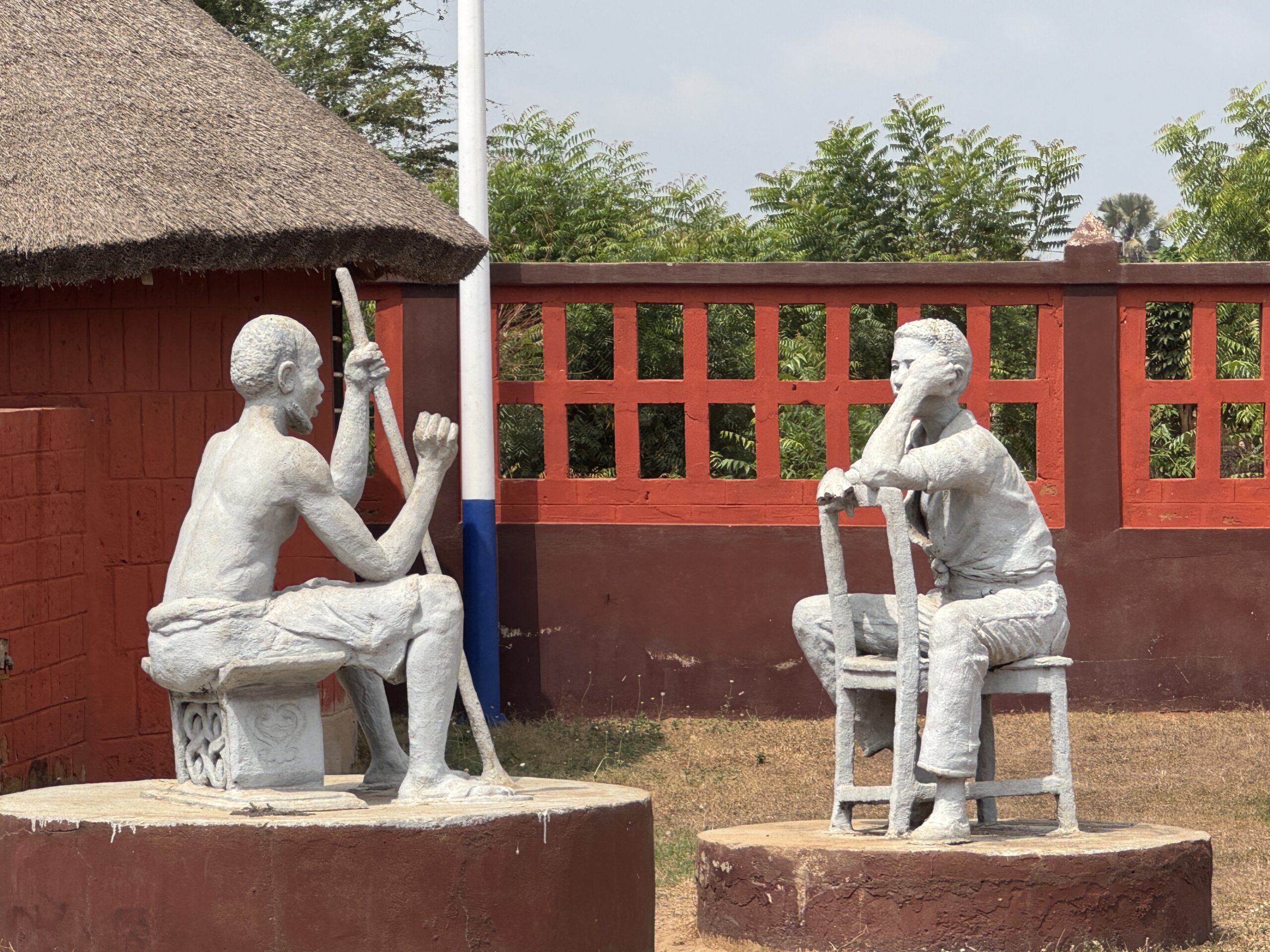
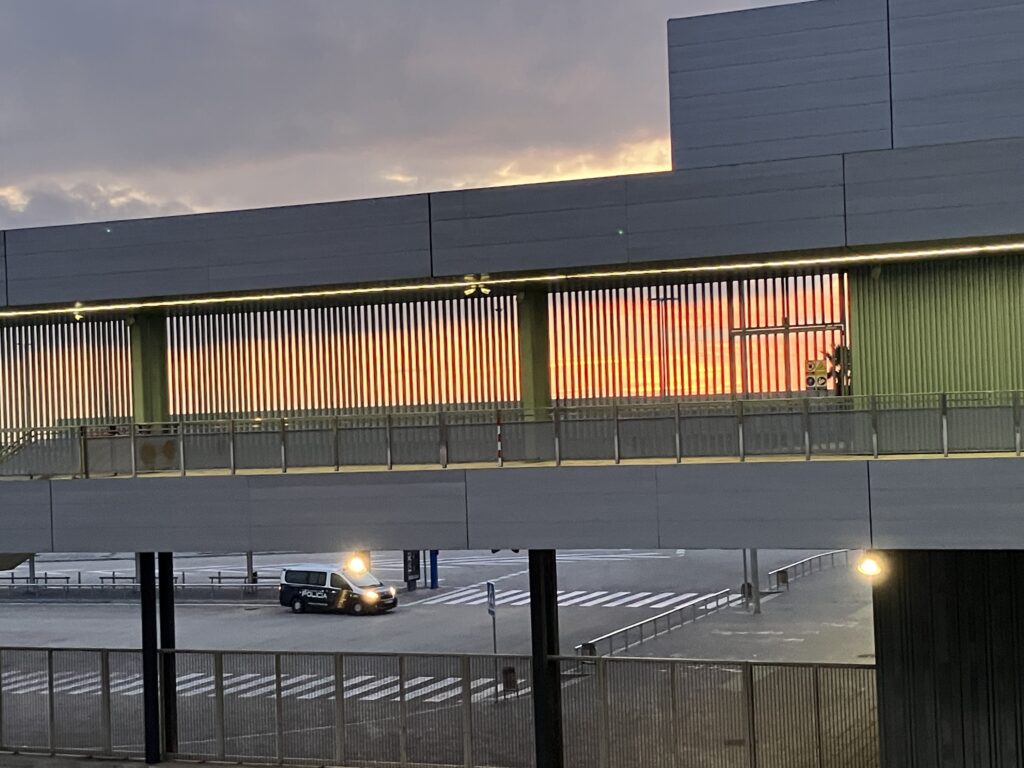

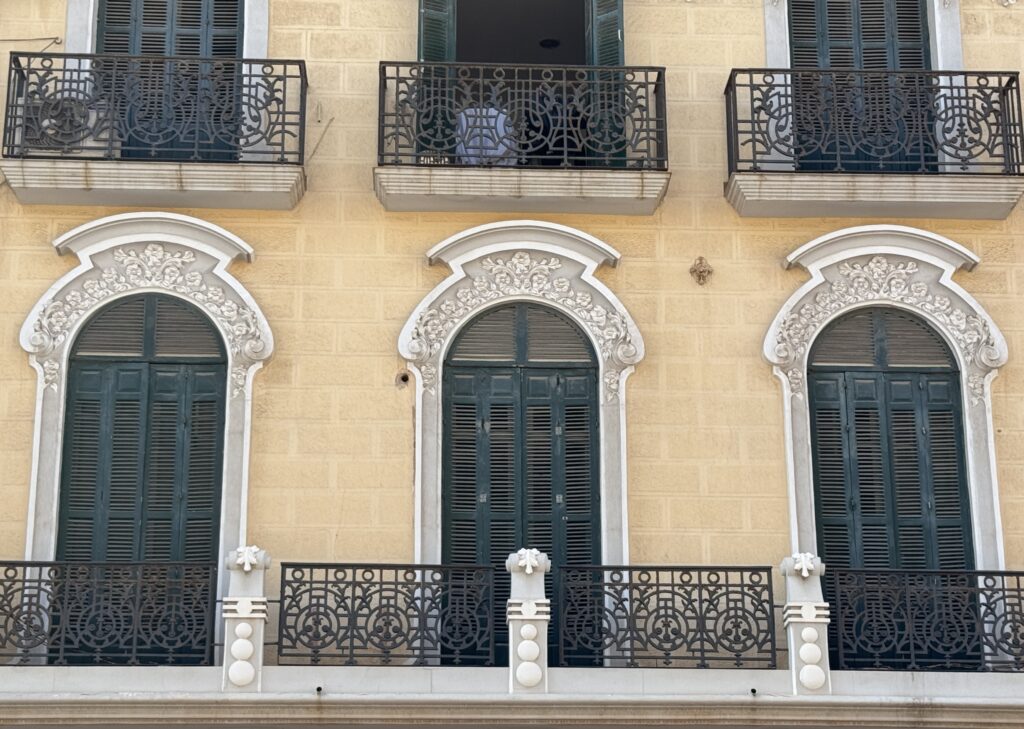
Thank you for documenting this experience. Intrigued enough to look up information on this traditional religion.
It was fascinating. I kept on thinking they were talking about voodoo, but although voodoo is related to vodún, they are so different. It was very interesting to learn all about it 🙂